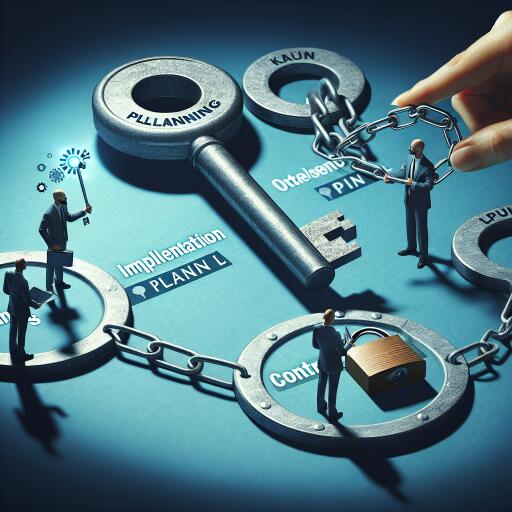Three Key Steps To Securing The Supply Chain
In today’s rapidly evolving digital landscape, the security of the supply chain has emerged as a paramount concern for corporations worldwide. A recent study by SecurityScorecard and The Cyentia Institute unveils a startling reality: an overwhelming 99% of Global 2000 companies are linked to a supply chain breach. This stark statistic underlines the importance of implementing robust cybersecurity measures to protect against potential vulnerabilities within the supply chain.
The essence of modern business is its interconnectedness, which, while facilitating unparalleled efficiencies, also presents significant risks. The domino effect of a single vulnerability can ripple through the entire supply chain, leaving widespread damage in its wake. High-profile breaches such as those affecting Change Healthcare, MOVEit, and SolarWinds highlight the critical nature of securing the supply chain against cyber threats.
Triggered by forthcoming SEC cybersecurity regulations that mandate disclosure concerning third-party breaches, the study by SecurityScorecard and The Cyentia Institute paints a concerning picture of the current state of supply chain security. “With the Global 2000 generating $51.7 trillion in revenue, their interconnectedness poses immense cyber threats. A staggering 99% are directly linked to suppliers who have recently suffered breaches, potentially leading to losses in the tens of billions,” remarked Wade Baker, Partner and Co-founder at The Cyentia Institute.
Whether it stems from a deliberate DDoS (Distributed Denial of Service) attack or an erroneous software update, the result of a supply chain incident is invariably severe, preventing users from accessing vital services and systems.
As the landscape of threats grows increasingly complex, the concept of Knowing Your Supply Chain (KYSC) has gained importance as a fundamental aspect of cyber resilience. Having a thorough understanding of both your organization’s dependencies and those of your suppliers is crucial for effectively managing and responding to incidents. Even the most dependable vendors are not immune to encountering security issues.
Here are three key steps towards enhancing supply chain security:
- Comprehensive Risk Assessment: Organizations must undertake a thorough risk assessment of their entire supply chain, identifying and evaluating all potential vulnerabilities. This proactive approach involves not only an analysis of direct suppliers but also those further down the chain, ensuring comprehensive visibility and control over potential risk factors.
- Implementation of Rigorous Cybersecurity Practices: Establishing and maintaining stringent cybersecurity measures across the supply chain is essential. This includes enforcing security protocols among all vendors, conducting regular security audits, and ensuring timely updates and patch management to address new vulnerabilities as they arise.
- Continuous Monitoring and Incident Response: Vigilant monitoring of the supply chain for any signs of security breaches or vulnerabilities allows for swift action and mitigation of potential impacts. An effective incident response plan, tailored to address specific risks within the supply chain, ensures preparedness to efficiently manage and recover from security incidents.
Ryan Sherstobitoff, Senior Vice President of Threat Research and Intelligence, emphasizes the broader significance of securing the supply chain: “The world is only beginning to grasp the potential for chaos caused by concentration risk. Understanding and managing your supply chain is not merely about avoiding disruptions; it is imperative for protecting the foundation of our interconnected economy.”
In conclusion, the security of the supply chain is a critical aspect of modern business that cannot be overlooked. As global supply chains become increasingly complex and interconnected, the adoption of rigorous cybersecurity practices, thorough risk assessments, and proactive incident response strategies will be key to safeguarding against the ever-evolving threat landscape. The responsibility lies with every organization to reinforce its defenses, ensure business continuity, and protect the global economy from potential cybersecurity calamities.










